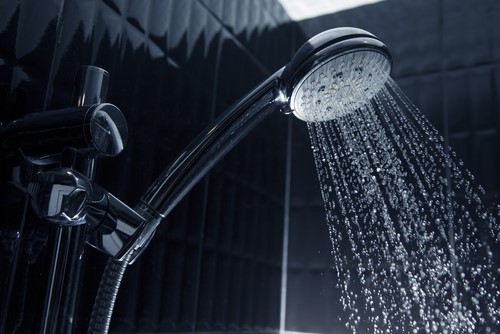{This Resource Right here in the next paragraph you can get a bunch of professional facts on the subject of Hiring a Plumbing Expert. We recommend that you clean your acrylic bathing product made of Delta ProCrylic or Acrylic with Innovex Technology with non-abrasive soaps and cleaners, such as: When it’s time to clean, always use a terry cloth towel, soft cloth or sponge to avoid scratching the acrylic surface. Don’t use abrasive scrubbing pads, steel wool or sponges, cause permanent damage to the acrylic material. If you use a drain cleaner or clog remover, be sure to rinse thoroughly with water so no product is left standing near the drain. Some chemicals and cleaners may deteriorate acrylic surfaces, causing cracks and, potentially, property damage. To avoid this, don’t use cleaning products that state on their label that they are not suitable for use on Acrylic, ABS, Polystyrene or Plastic. Be sure to check the label of any product before you apply it to the surface; it’s easier to avoid damage than to try to remedy it. Chemicals we do not recommend using to clean acrylic showers/tubs: When you’re ready to apply sealant, a little planning goes a long way. Pick up some painter’s tape and use it to mask off the seam to help make cleaning up easier. When you’re applying the bead, use a constant, steady speed to avoid an uneven finish. Use a caulk tool or a plastic spoon to work the sealant into the joint. Wetting the tool with denatured alcohol will help create a smooth finish. Follow the directions on the back of the tube for cure time. Certain chemicals and cleaners may deteriorate acrylic surfaces, causing cracks and, potentially, property damage. After you’re finished applying it, clean up the product surface and remove any excess sealant with denatured alcohol. Don’t use solvents (turpentine, lacquer thinner, mineral spirits, paint thinner, MEK, xylene, acetone, naphtha, etc.) that can wreak havoc on an acrylic surface. With a little care and consideration, you can prevent damage to your acrylic shower or tub. Keep a supply of soft cloths handy and remove any damaging products or abrasive scrubbing items from the bathroom to ensure they aren’t around when it’s time to clean. https://www.deltafaucet.com/design-innovation/inspiredliving/how-to-clean-acrylic-shower I hope you liked our article on Hiring a Plumbing Expert. Thank you for taking a few minutes to read our article. Please set aside a second to distribute this write-up if you appreciated it. Thanks a lot for your time. Don't forget to stop by our website back soon.
Acrylic bathrooms, shower trays, as well as various other acrylic shower room ware have come to be much more usual in restrooms in current times. Not as elegant and also sturdy as enamel and porcelain baths as well as components, they are more inexpensive as well as offer quite a lot the very same standard purpose. Some common instances of damages to acrylic washroom components consist of staining, splits, openings, and so on.Scraped shower or bath surface
Polymer shower room components are not abrasion-resistant like enamel varieties. Being a really soft material, acrylic scratches can even be hidden without coating or filling. For these, you must seek professional aid for your bathroom repair work.Chemical Reactions
Often, individuals attempt to paint the whole surface area of their acrylic bathroom on their own either because they do not like the color to conceal blemishes. When they do not such as the end result, they use paint cleaners. You must never utilize paint remover on acrylic baths. Paint eliminators do not respond with the surface of steel baths, they destroy acrylic bathrooms irreversibly. This produces even more benefit the expert. The best course of action below is to call an expert for help with replacing the bathroom.Bath Staining
With prolonged usage of acrylic baths comes discoloration or discoloration. While some stains can be eliminated conveniently, using unique chemicals, others call for that the bath be resprayed. Aromatherapy oils loosen the dust in some instances thereby bring back the bathroom to its previous splendor.Cracked Acrylic Baths
The life expectancy of acrylic and also fiberglass baths is up to 15-20 years for shower frying pans and baths, usually. Fractures in an acrylic shower tray are possibly among the simplest problems to fix for a repair work expert. This is the same for PVC, resin, and other such materials.
Polymer bathrooms, shower trays, and other acrylic shower room ware have actually become a lot more common in bathrooms in current times. You must never ever use paint eliminator on acrylic bathrooms. Paint eliminators do not react with the surface area of steel bathrooms, they damage acrylic baths irreversibly. With long term use of acrylic baths comes staining or staining. The life expectancy of acrylic as well as fiberglass baths is up to 15-20 years for shower pans and also bathrooms, generally.How to clean Acrylic shower
USE THESE NON-ABRASIVE CLEANERS
DO NOT USE THESE CLEANERS
Sealant Application Tips

This Site
5 Solutions to Acrylic Shower Room Problems
See Availability